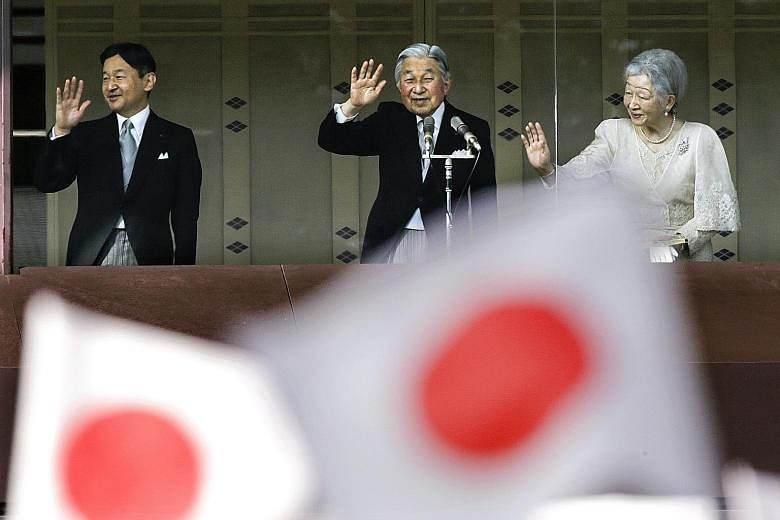Japan will need to hold "prudent and thorough" discussions on the future of its royal lineage, Prime Minister Shinzo Abe said yesterday, as the world's oldest continuous hereditary monarchy is threatened by a lack of male heirs.
Women are barred from taking the throne, and Mr Abe's comments to Parliament came as the nation edges closer to deciding when its revered Emperor Akihito, who turns 84 next month, can abdicate.
He ascended to the largely ceremonial position in 1989.
Domestic media, citing informed sources, have floated two dates in 2019 - March 31 and April 30. The latter is said to be favoured by the government as March is traditionally busier given that it marks the close of a fiscal year.
Mr Abe will chair a meeting of the 10-member Imperial Household Council to discuss the date of Japan's first abdication in 200 years on Dec 1. The panel comprises civil servants and officials from the Imperial Household Agency that manages royal family matters.
"Maintaining the stability of imperial succession is an extremely crucial issue that relates to the foundation of Japan as a country," Mr Abe said.
Crown Prince Naruhito, 57, will ascend the throne the day after his father steps down, marking the start of a new era.
Thereafter, there will be only two male heirs to the throne in a bloodline that dates back to 660BC: Prince Akishino, 51, the Crown Prince's younger brother; and Prince Hisahito, 11, who is Prince Akishino's only son.
Talks were held over a decade ago on the possibility of female monarchs, but these were quickly shelved with Prince Hisahito's birth and have never been resuscitated. Currently, daughters born into the royal family have to give up their status and become "commoners" when they get married.
This will be the case when Princess Mako - Emperor Akihito's eldest granddaughter - marries her university sweetheart, Mr Kei Komuro, next year. Both are 26.
After Princess Mako's departure from the imperial family, the number of royal family members will drop to 18, of whom 13 are women and eight are below the age of 40.
The question of a male heir was not an issue in pre-war Japan, when the imperial family comprised as many as 12 "collateral branches". The post-war 1947 Constitution drafted by the United States not only stripped the emperor of his status as a "divine ruler", but also the royal status of the other 11 branches as a cost-saving step.
The shrinking pool of royals has forced Tokyo to consider the idea of forming "female-led imperial branches", which would enable Princess Mako to continue her royal duties after marriage.
But the conservative right-wing Liberal Democratic Party government and its affiliated ultra-nationalist Nippon Kaigi lobby group appear to be resistant to allowing sons born to a princess with a "commoner" husband to take the throne.

